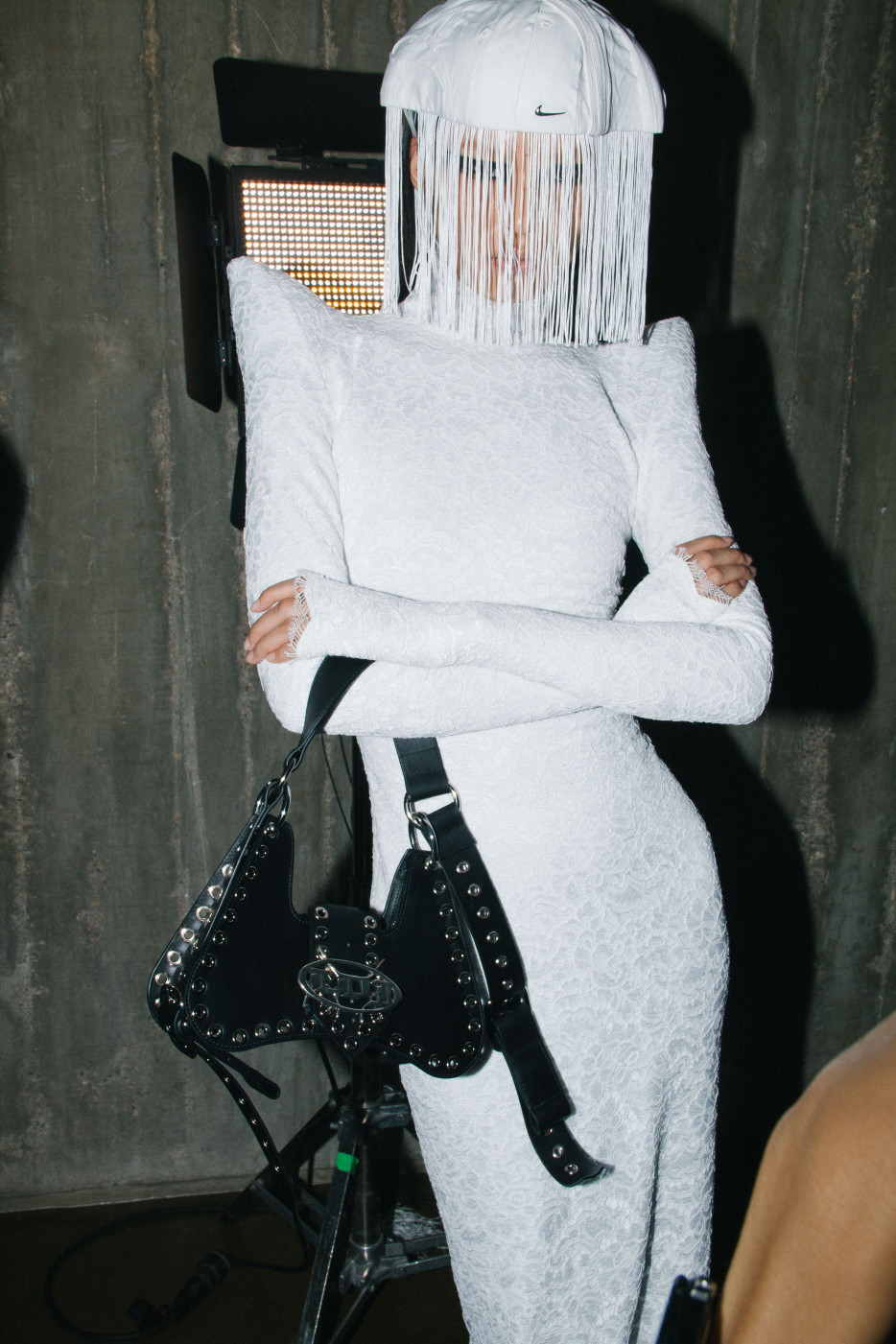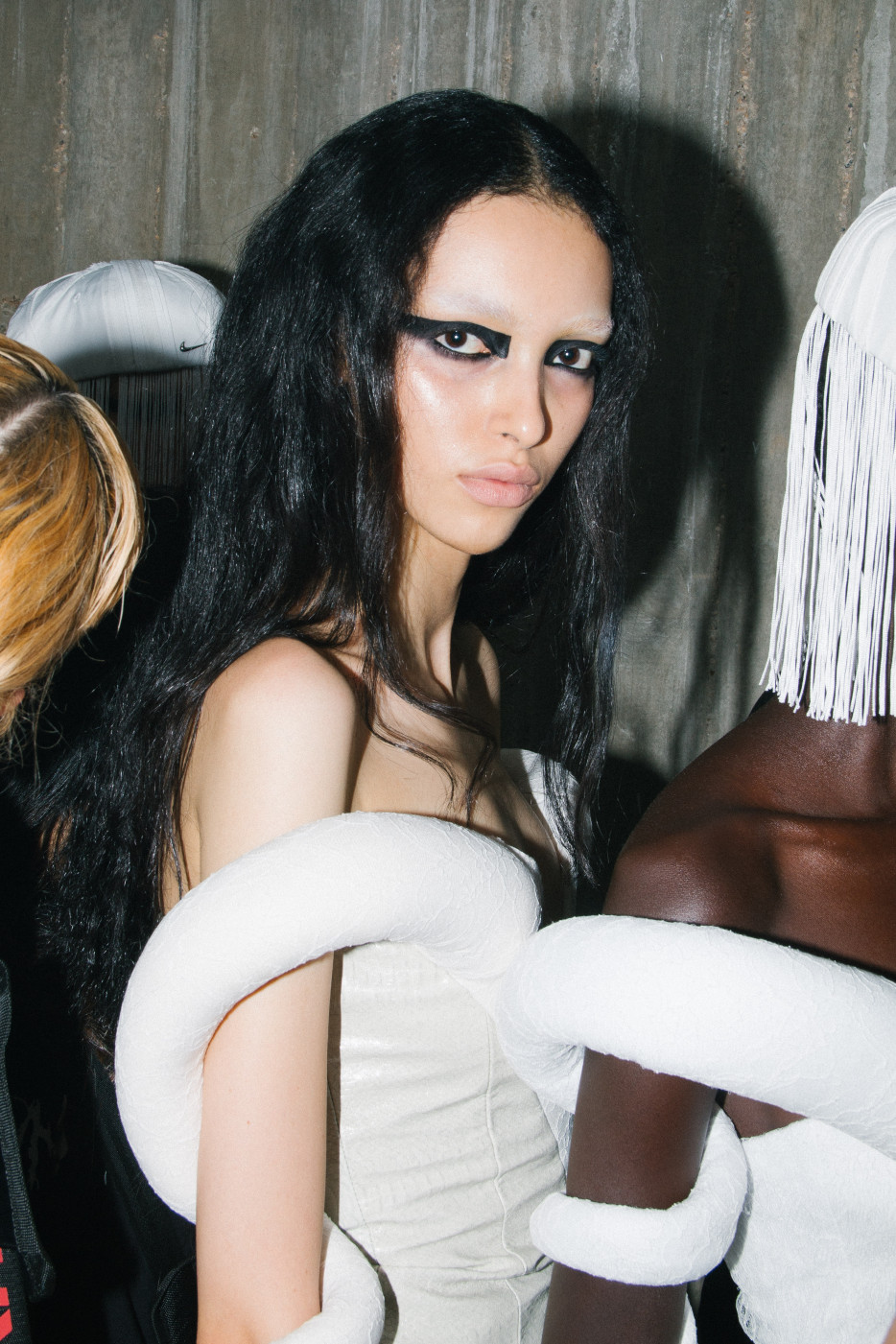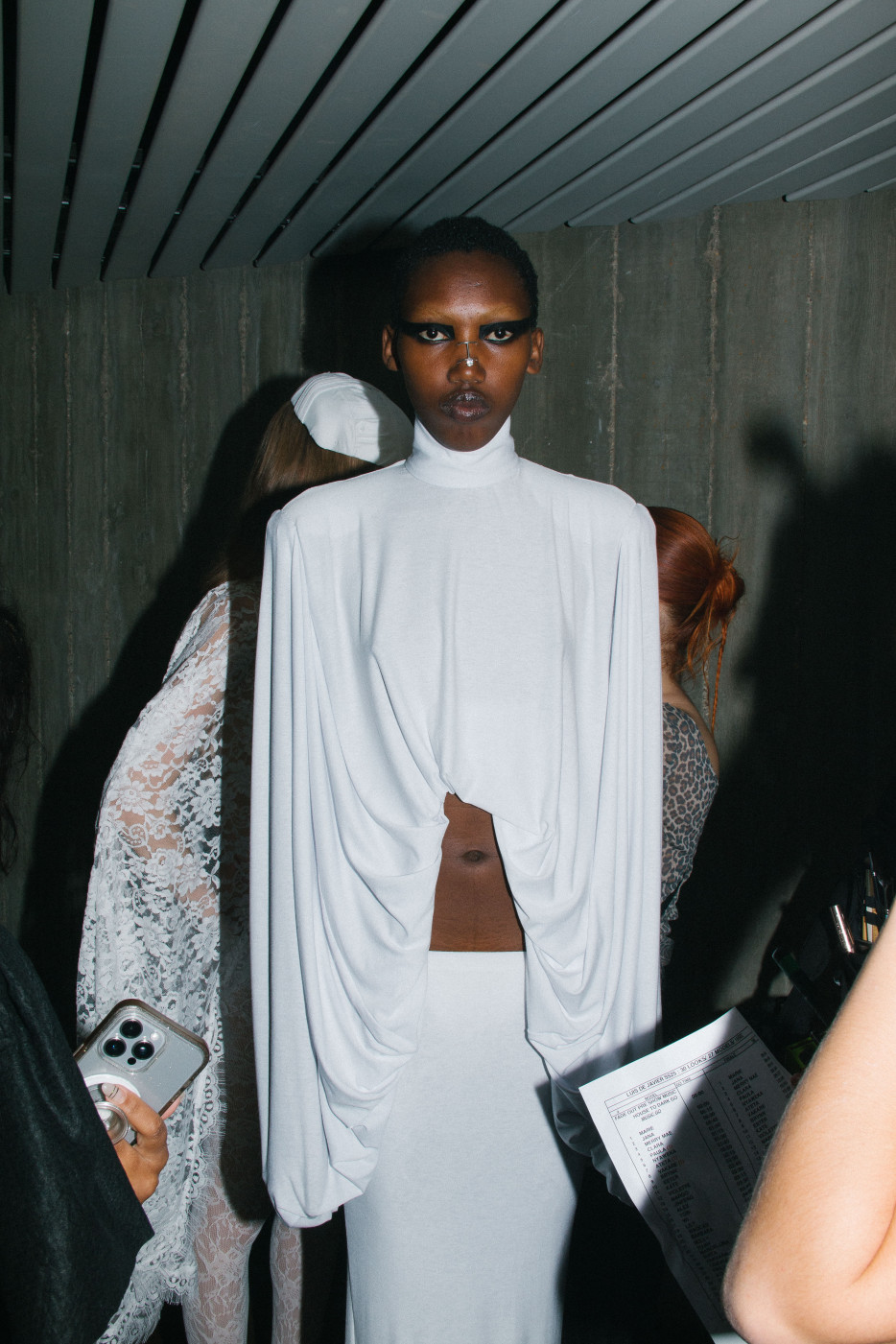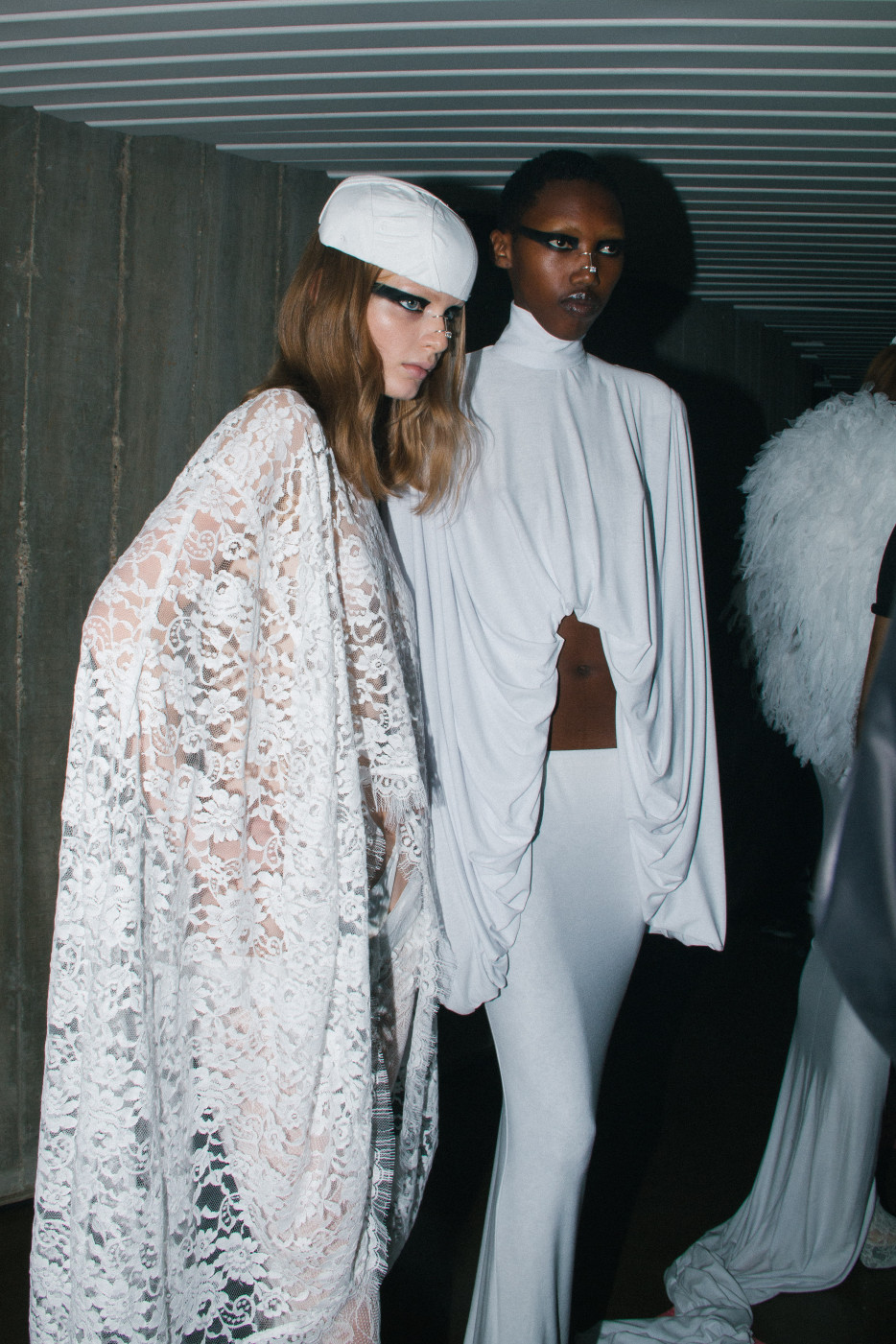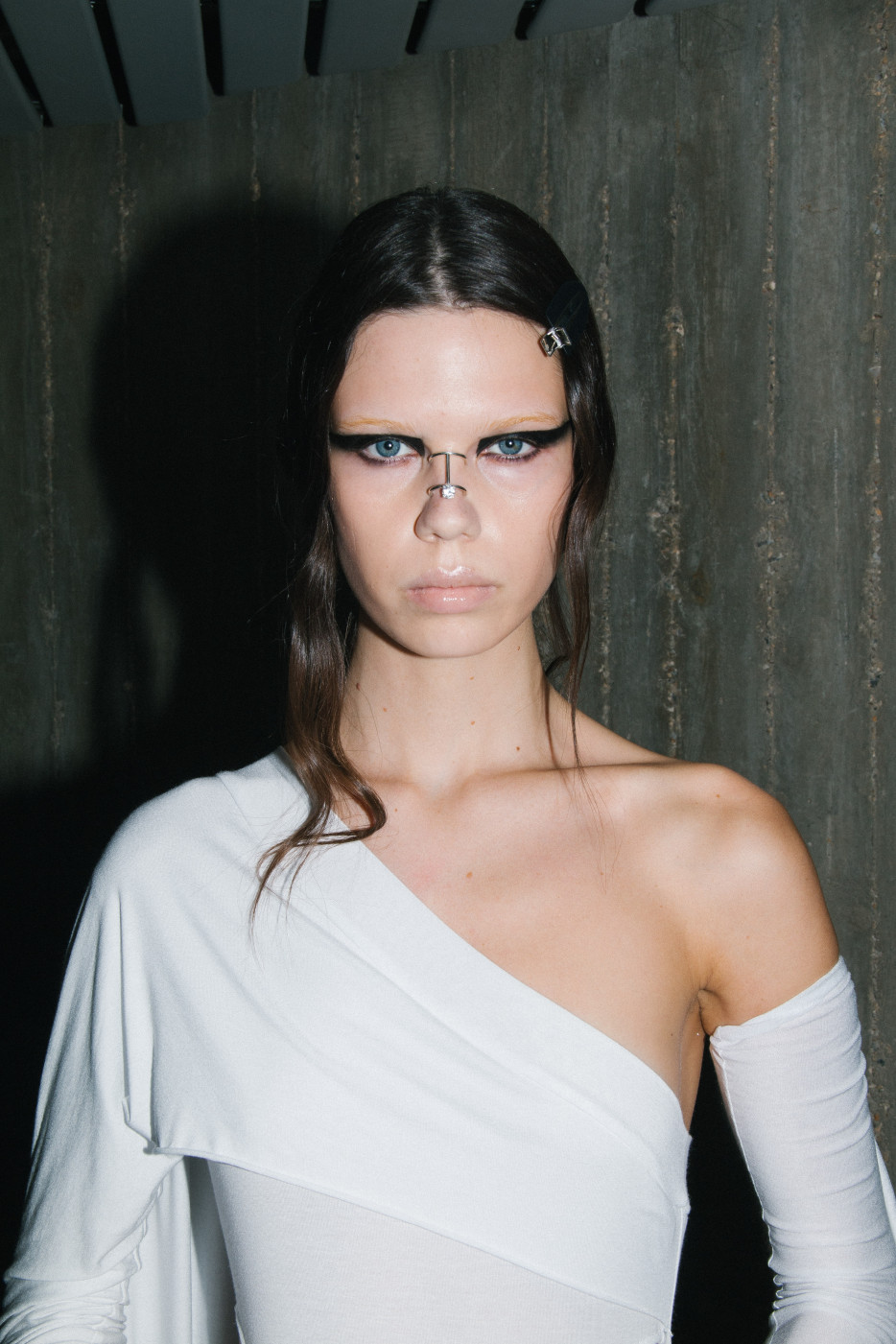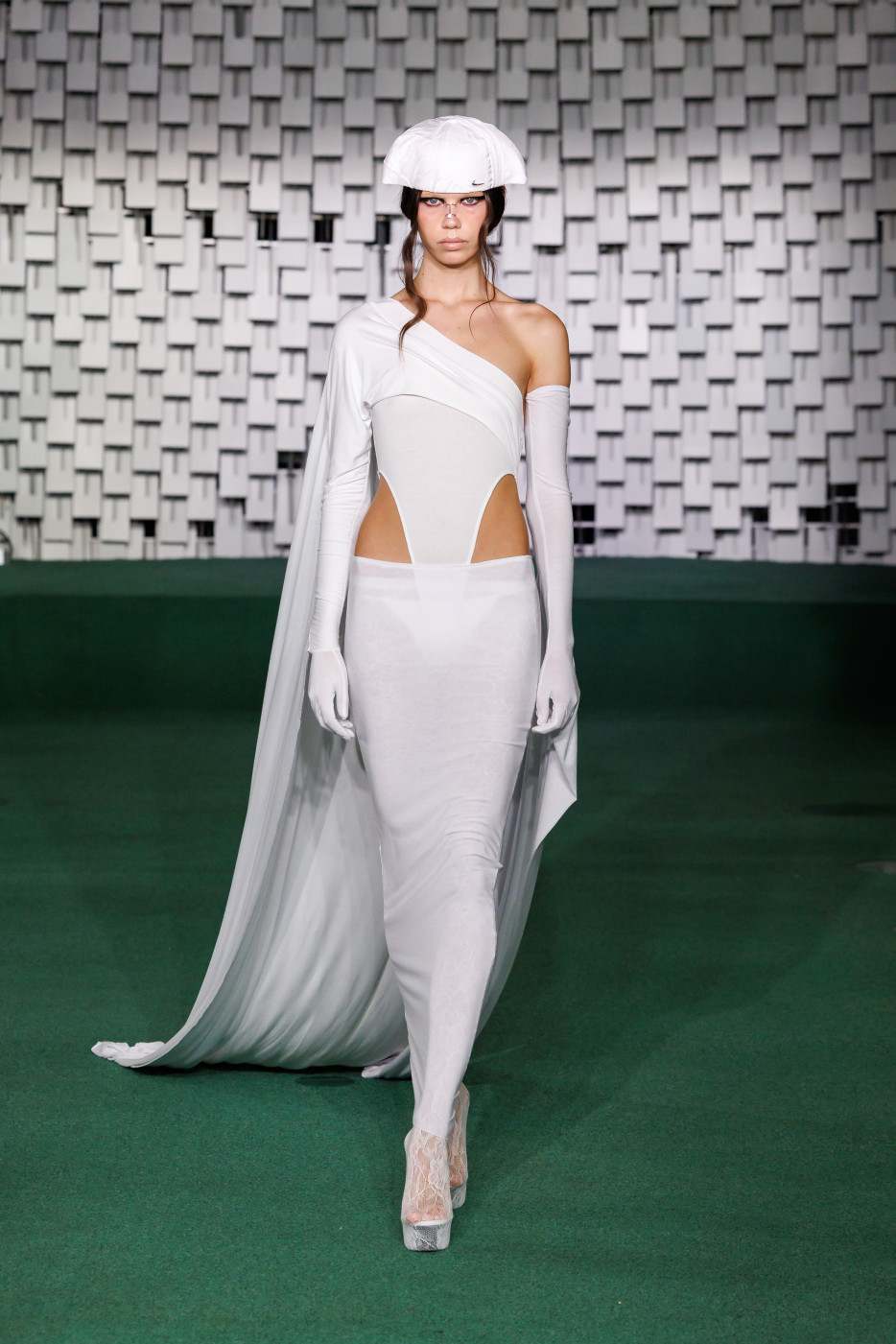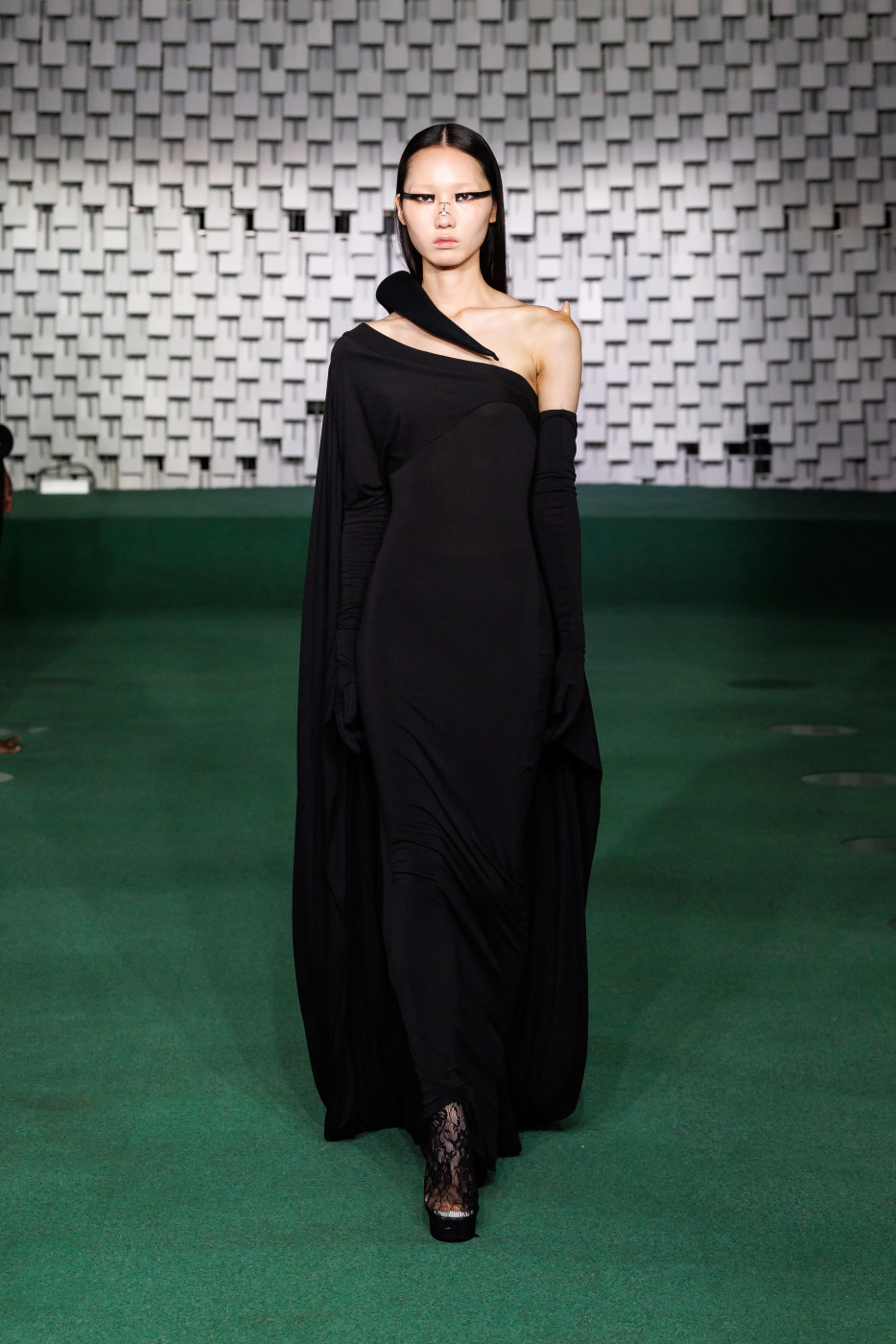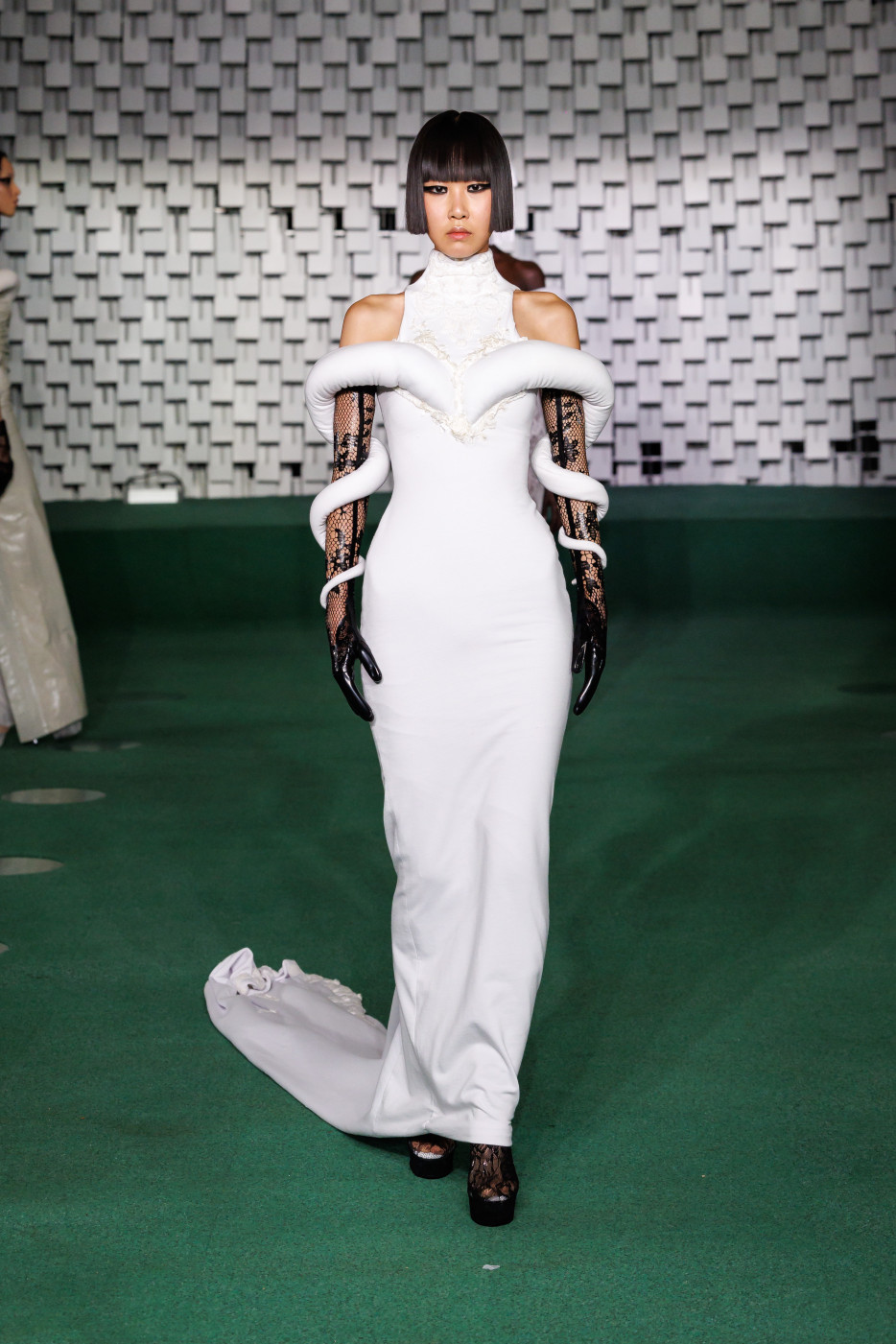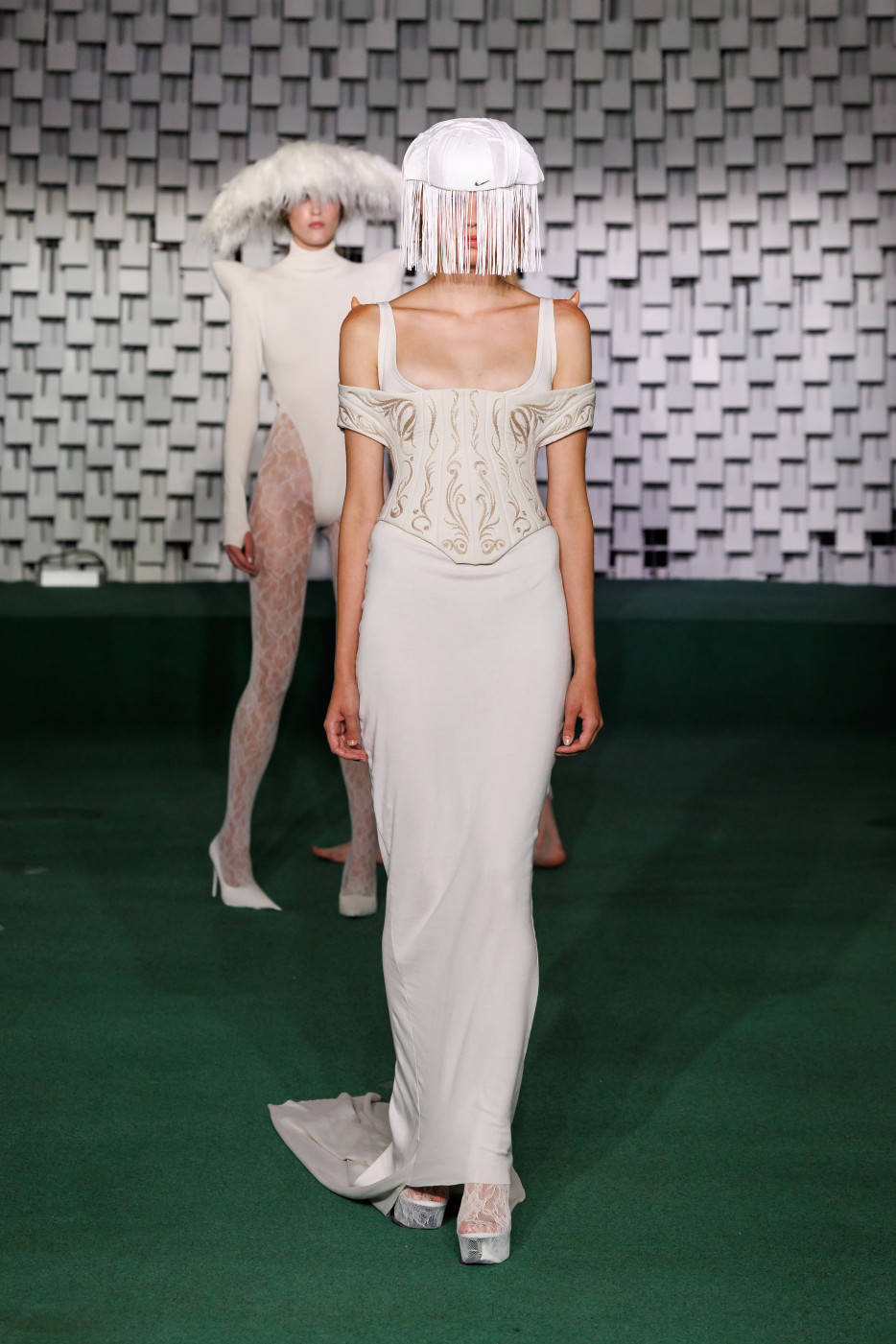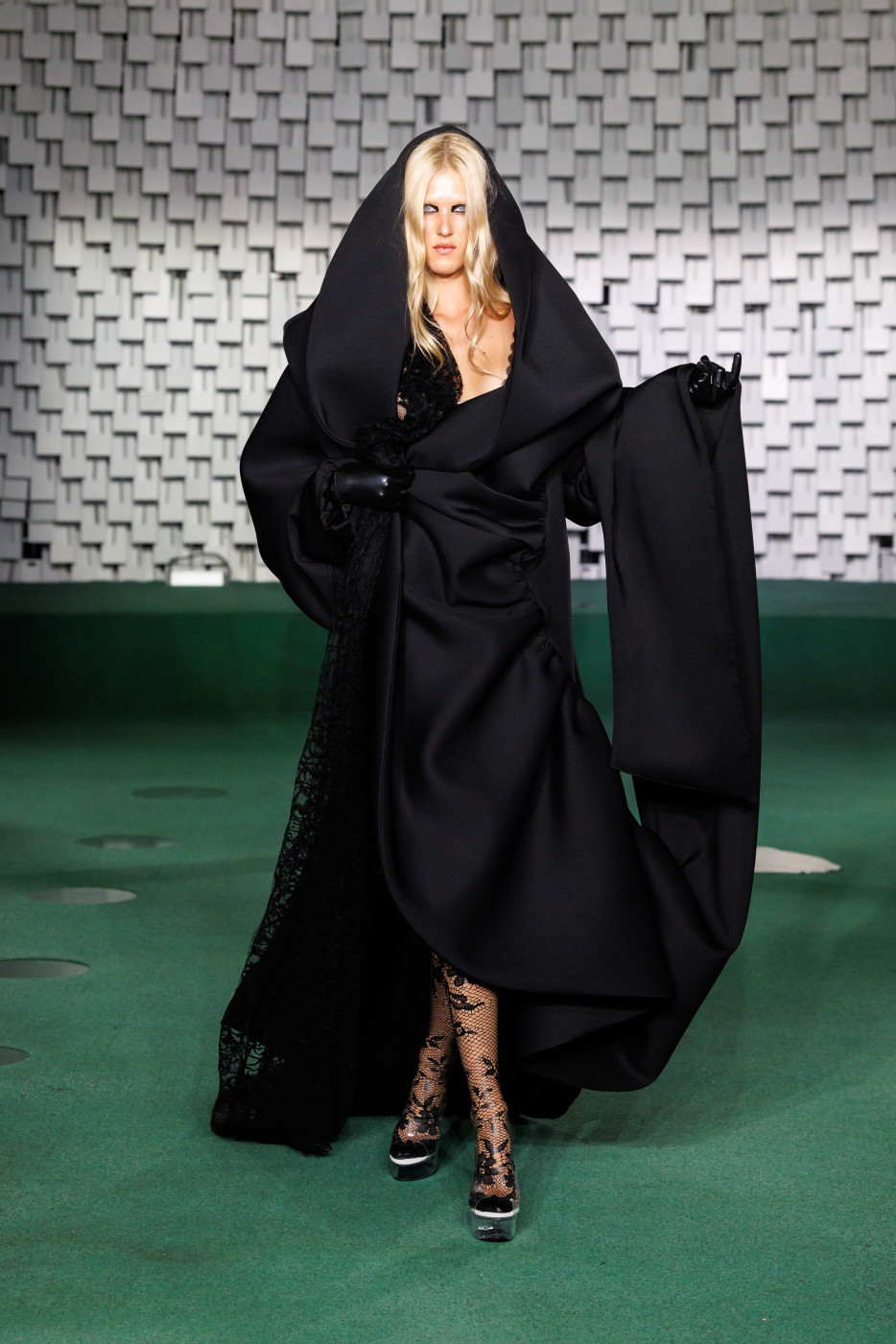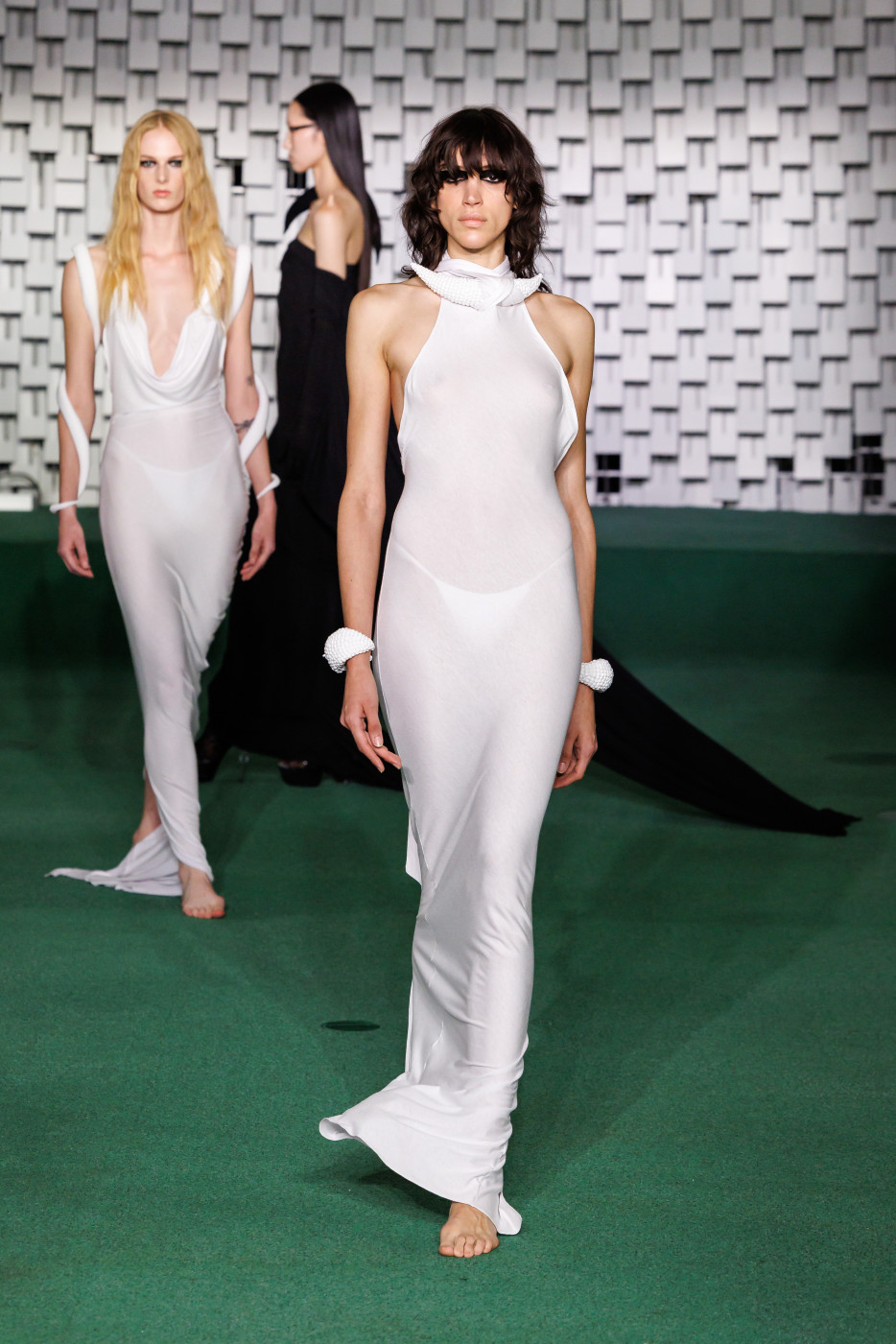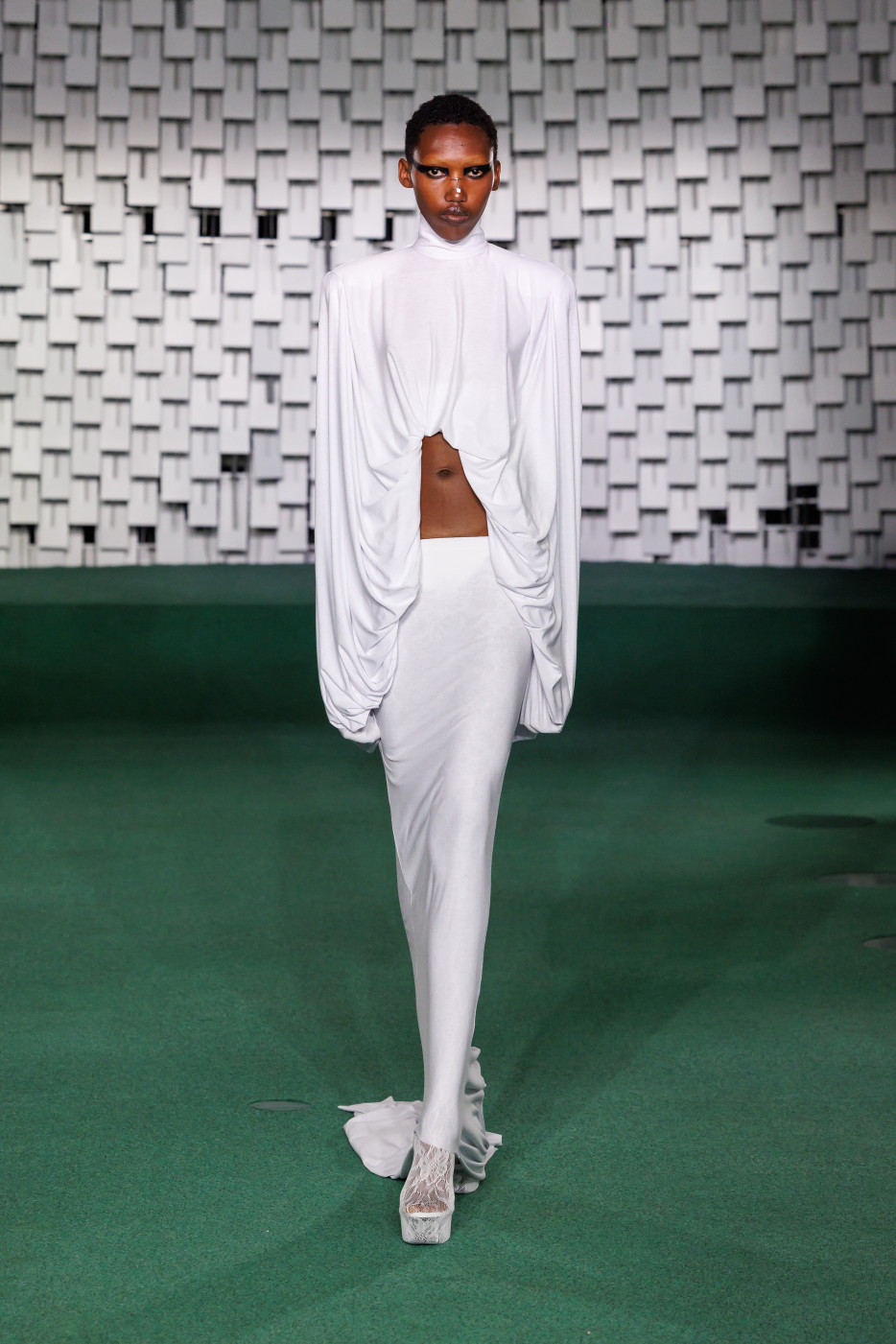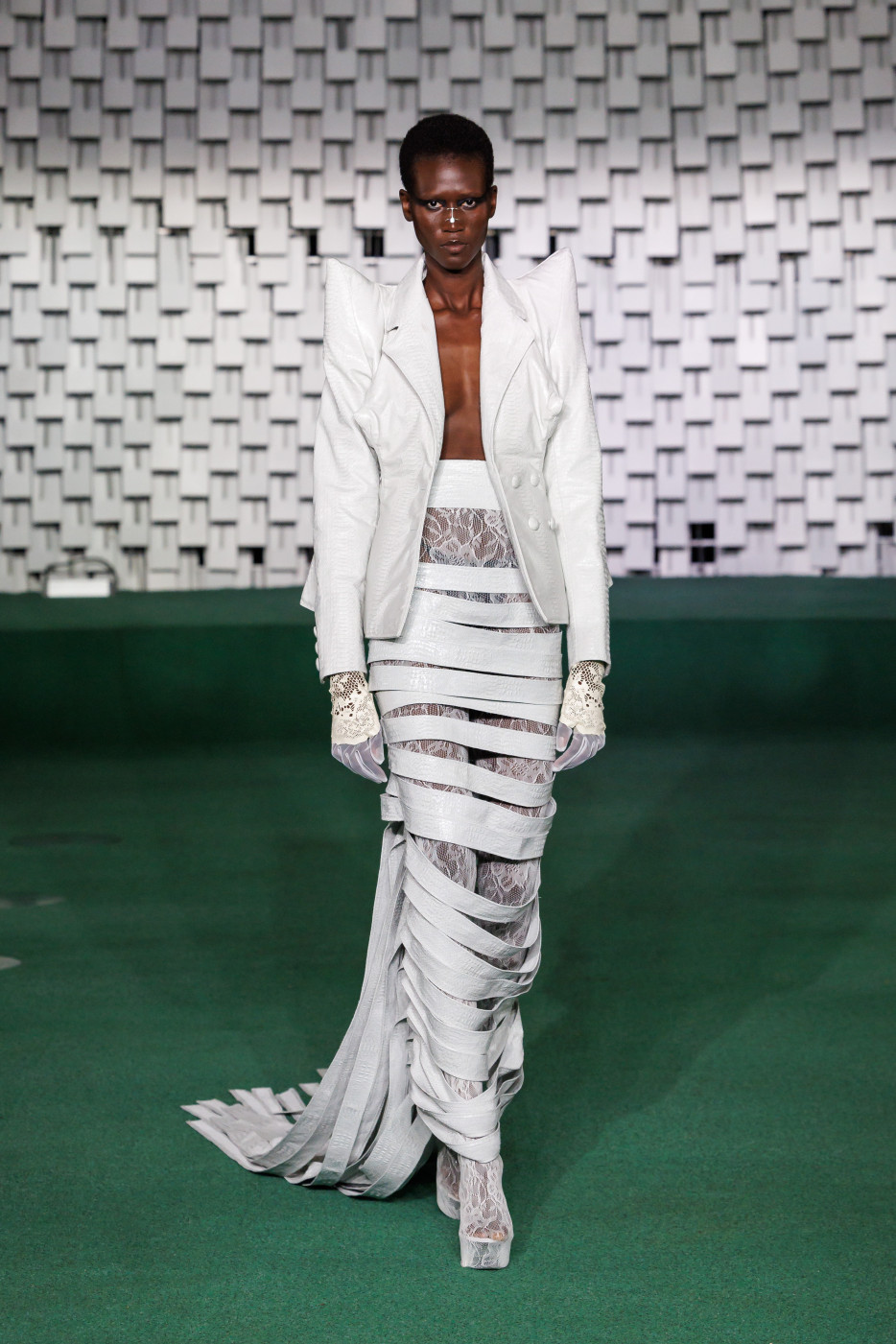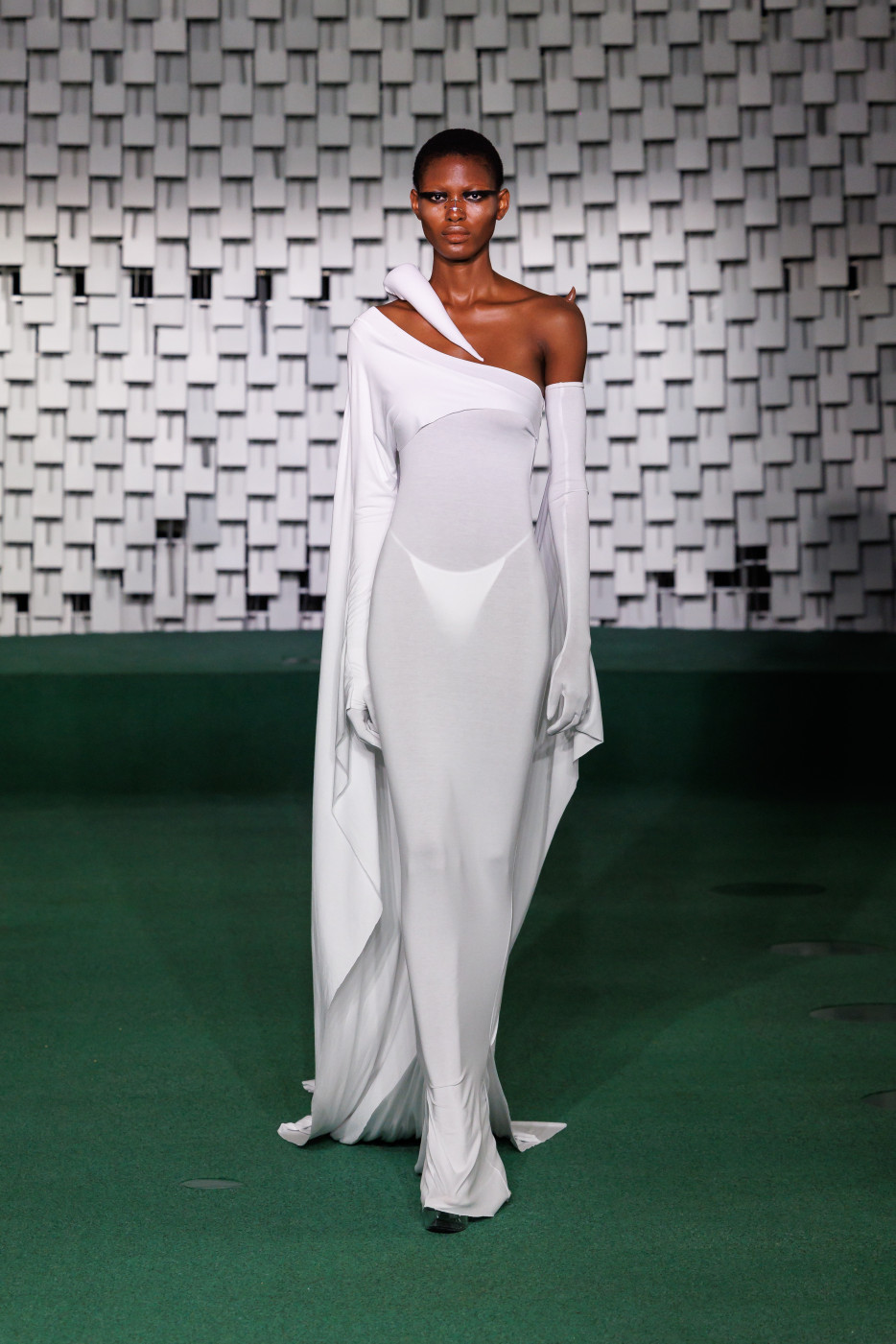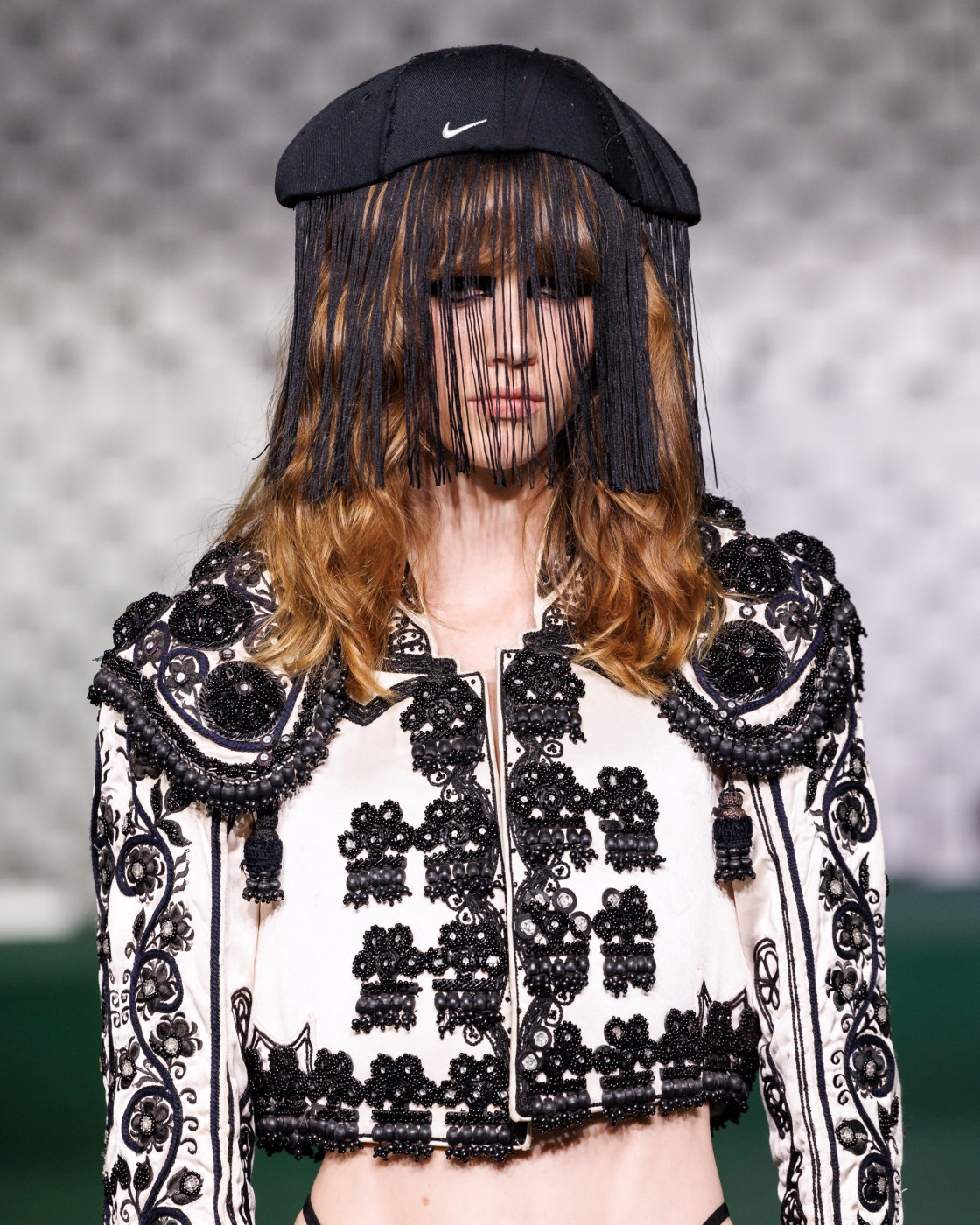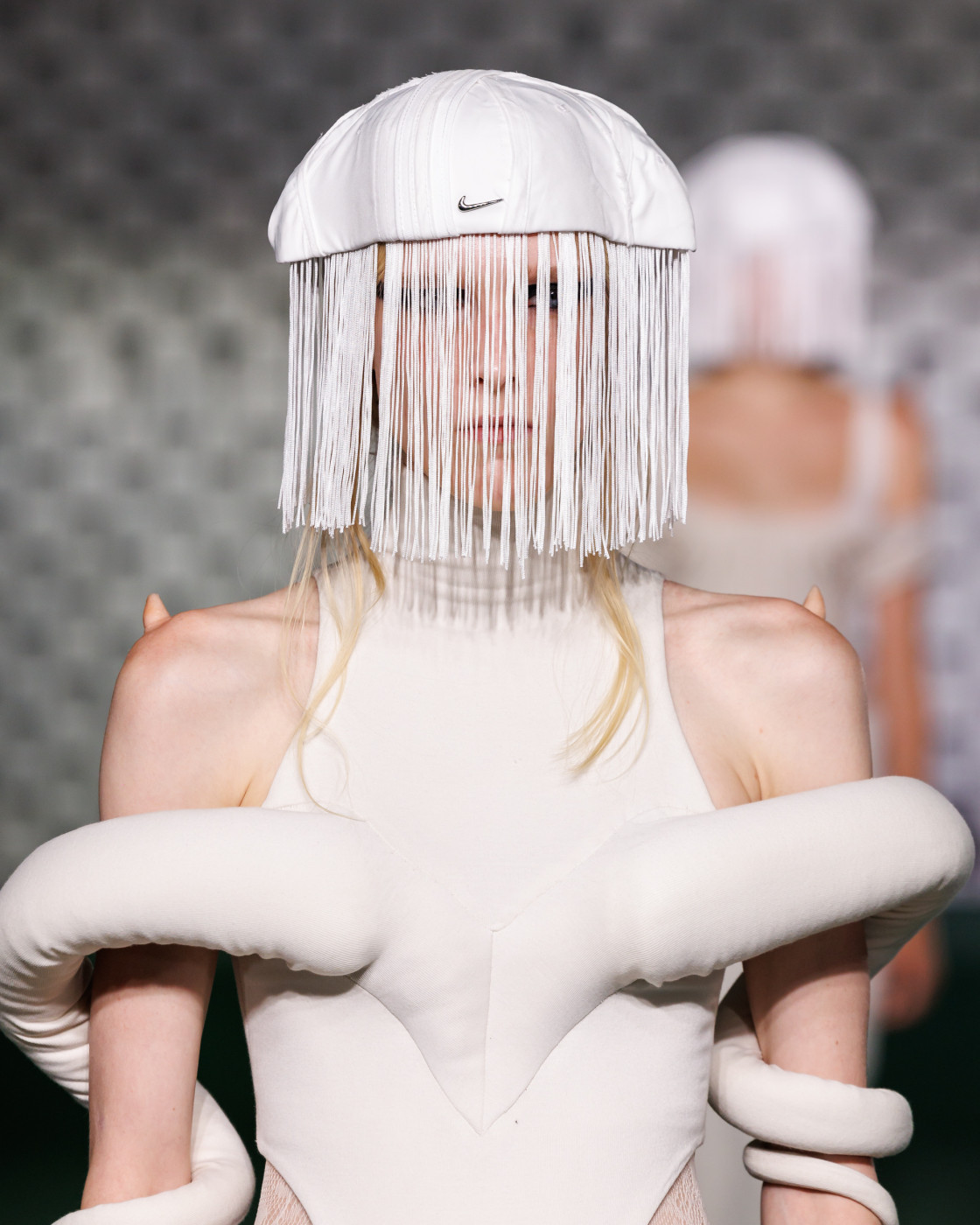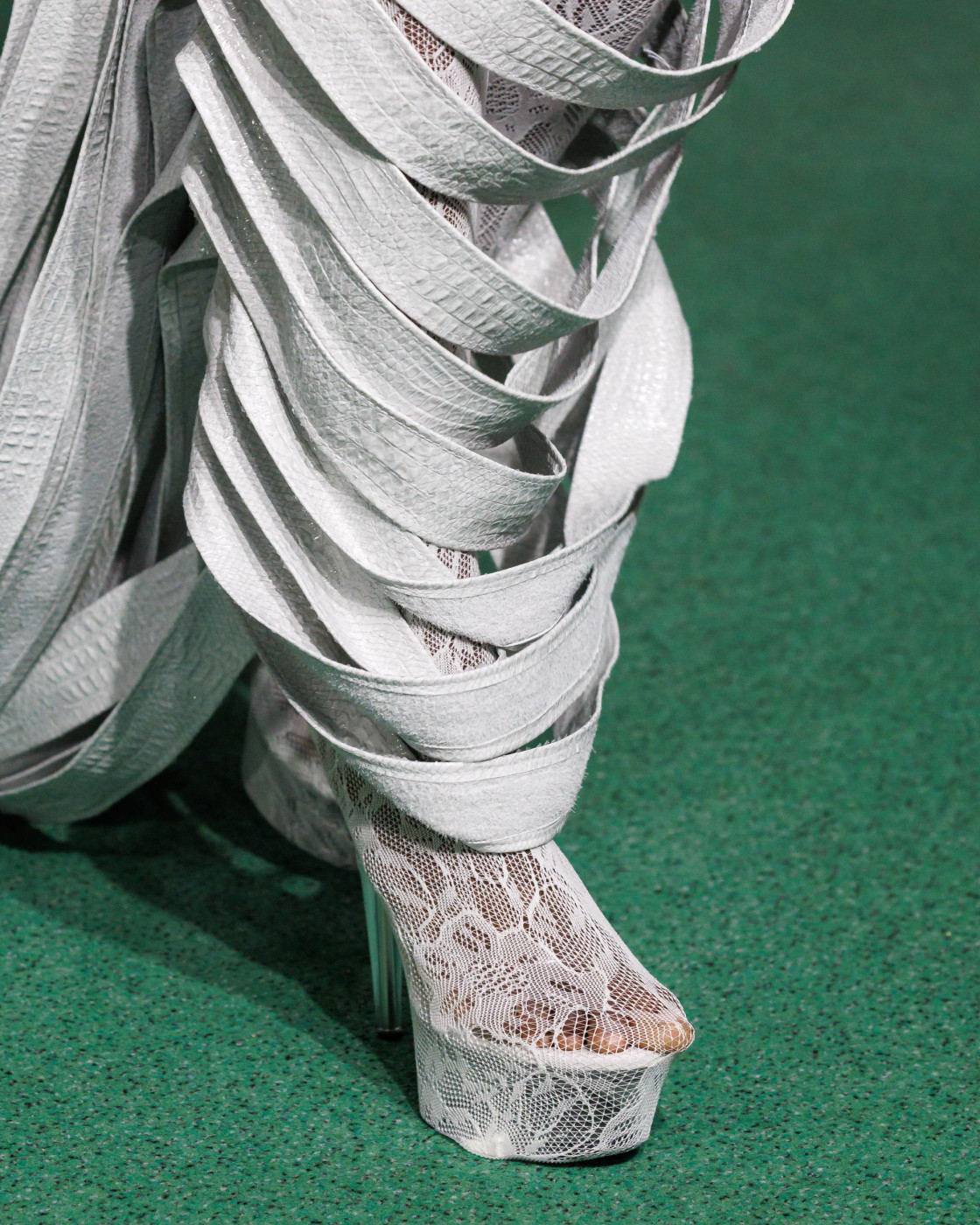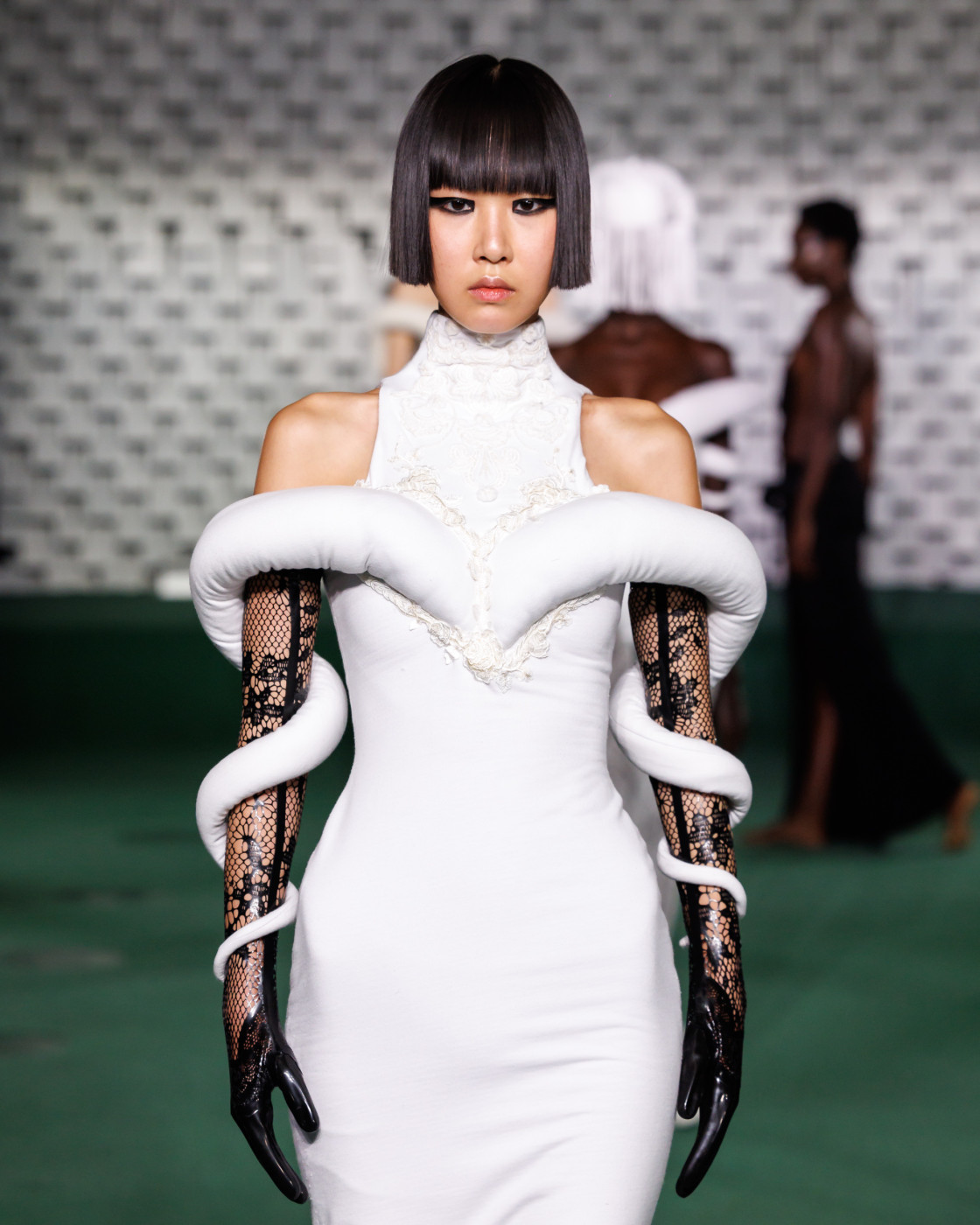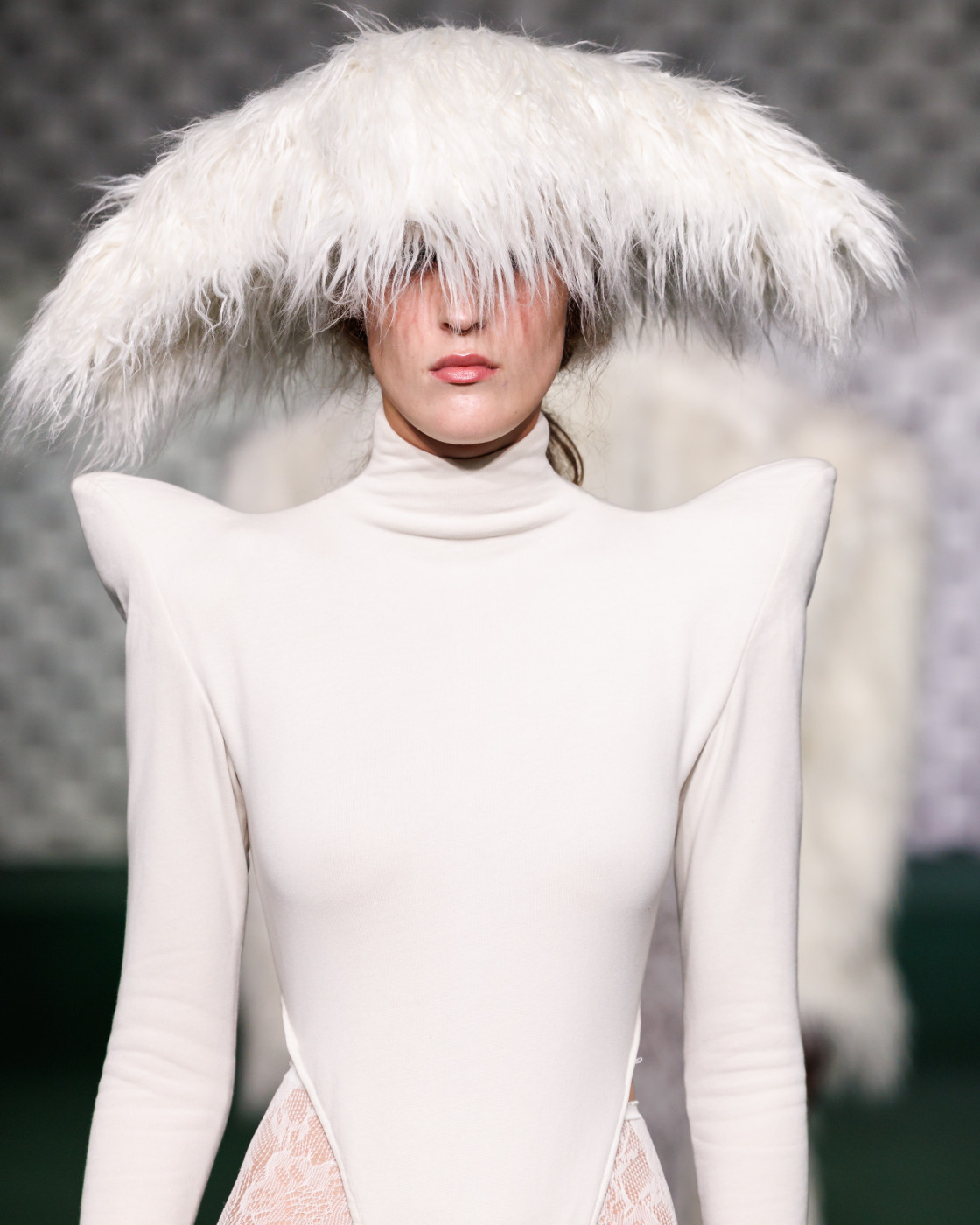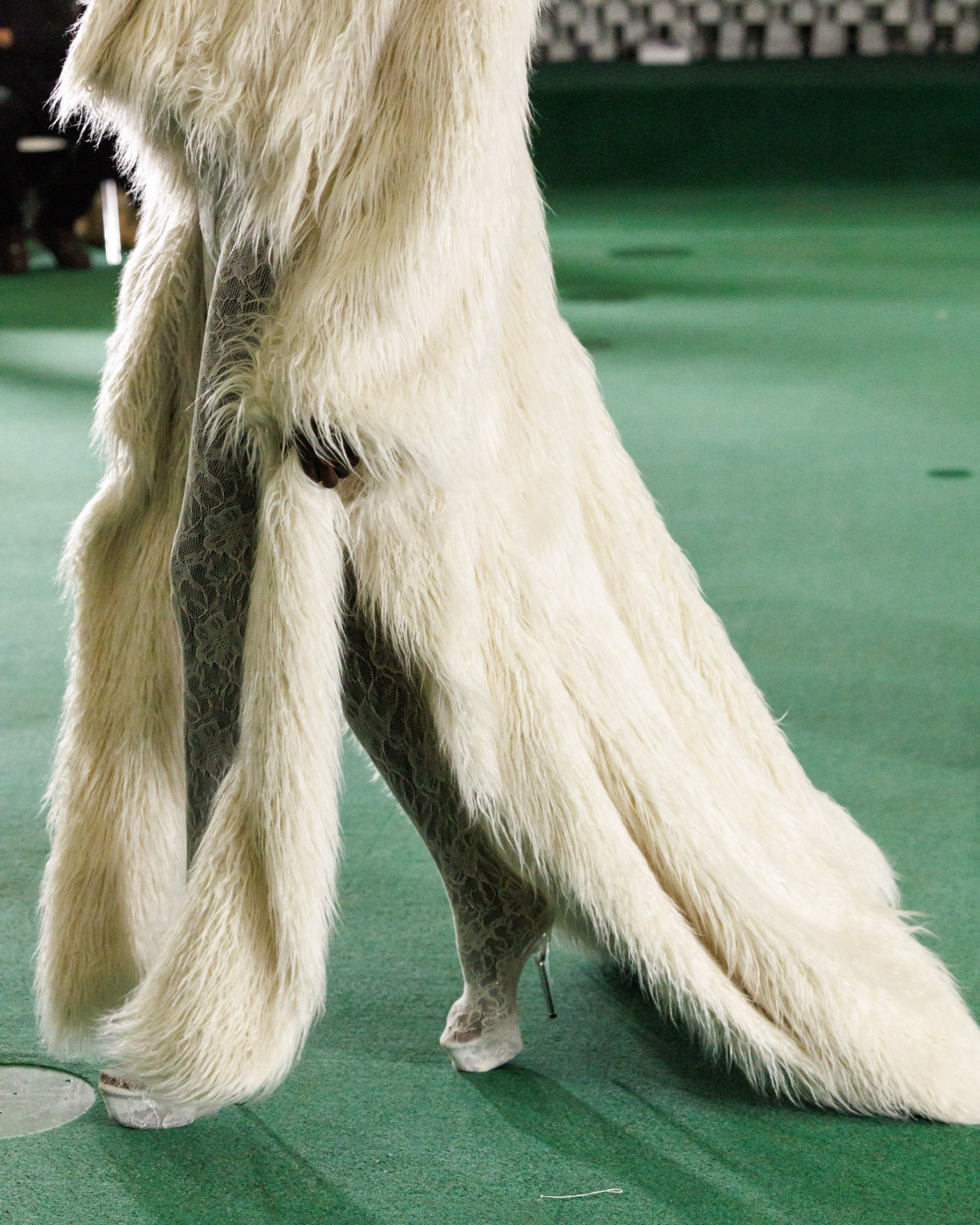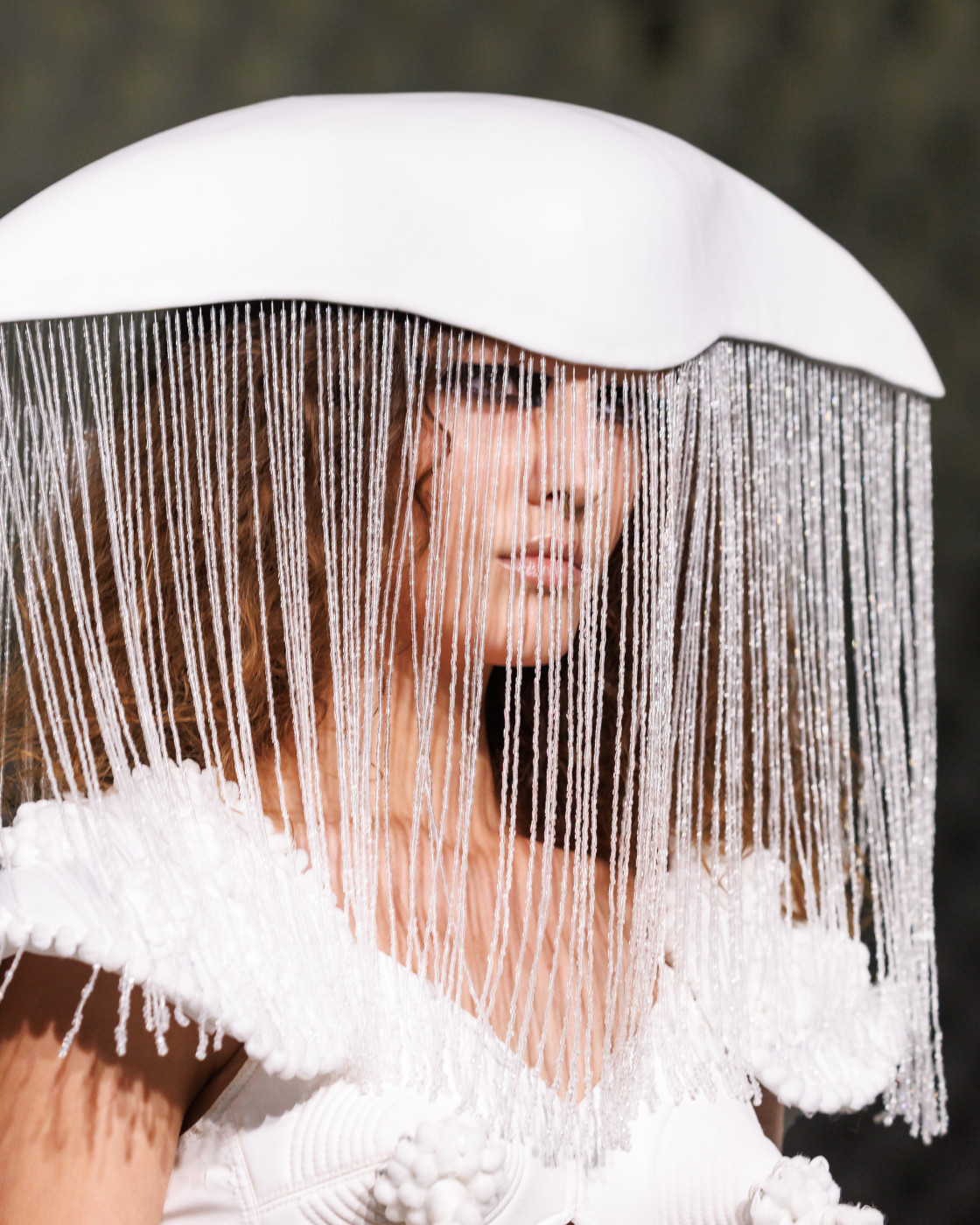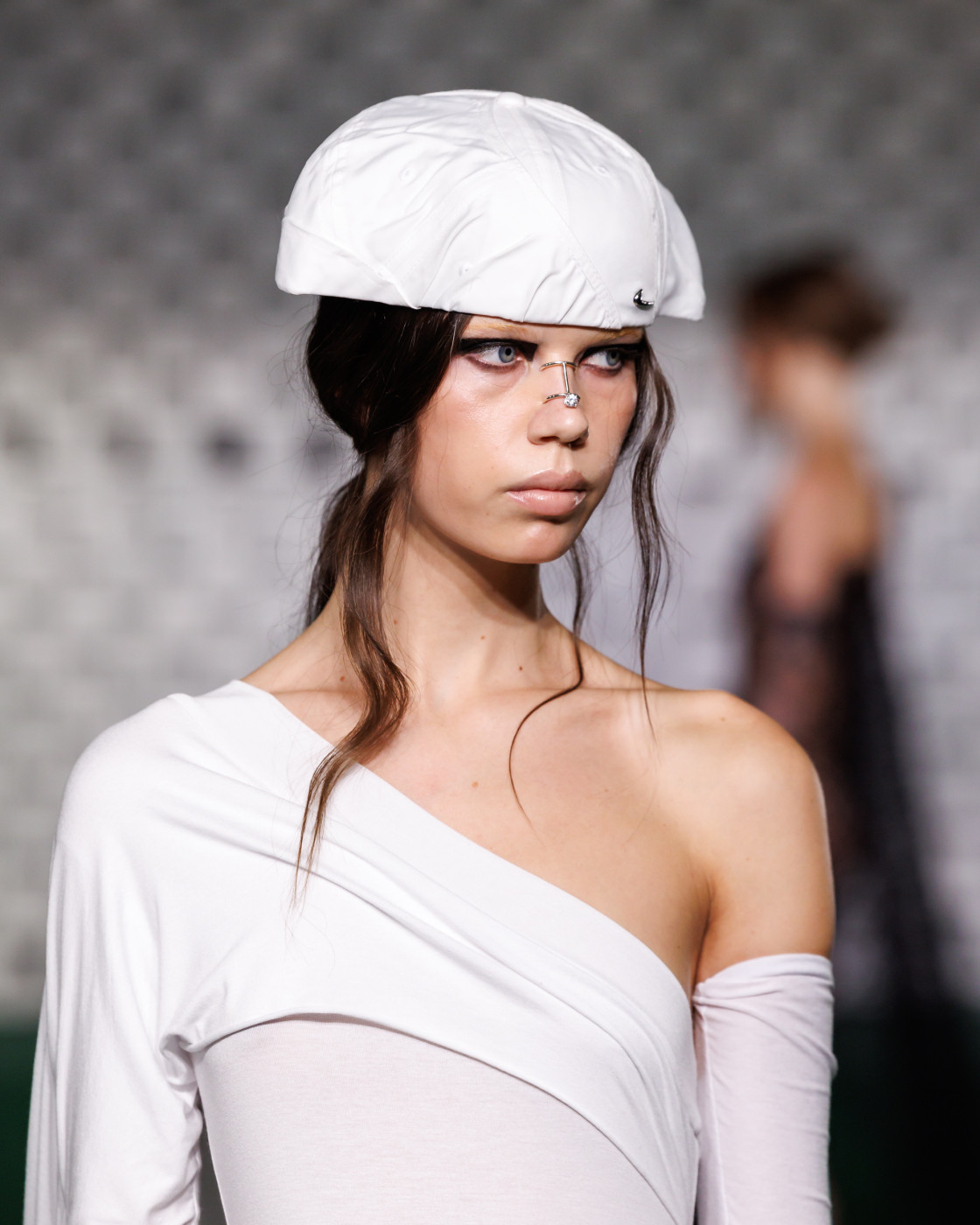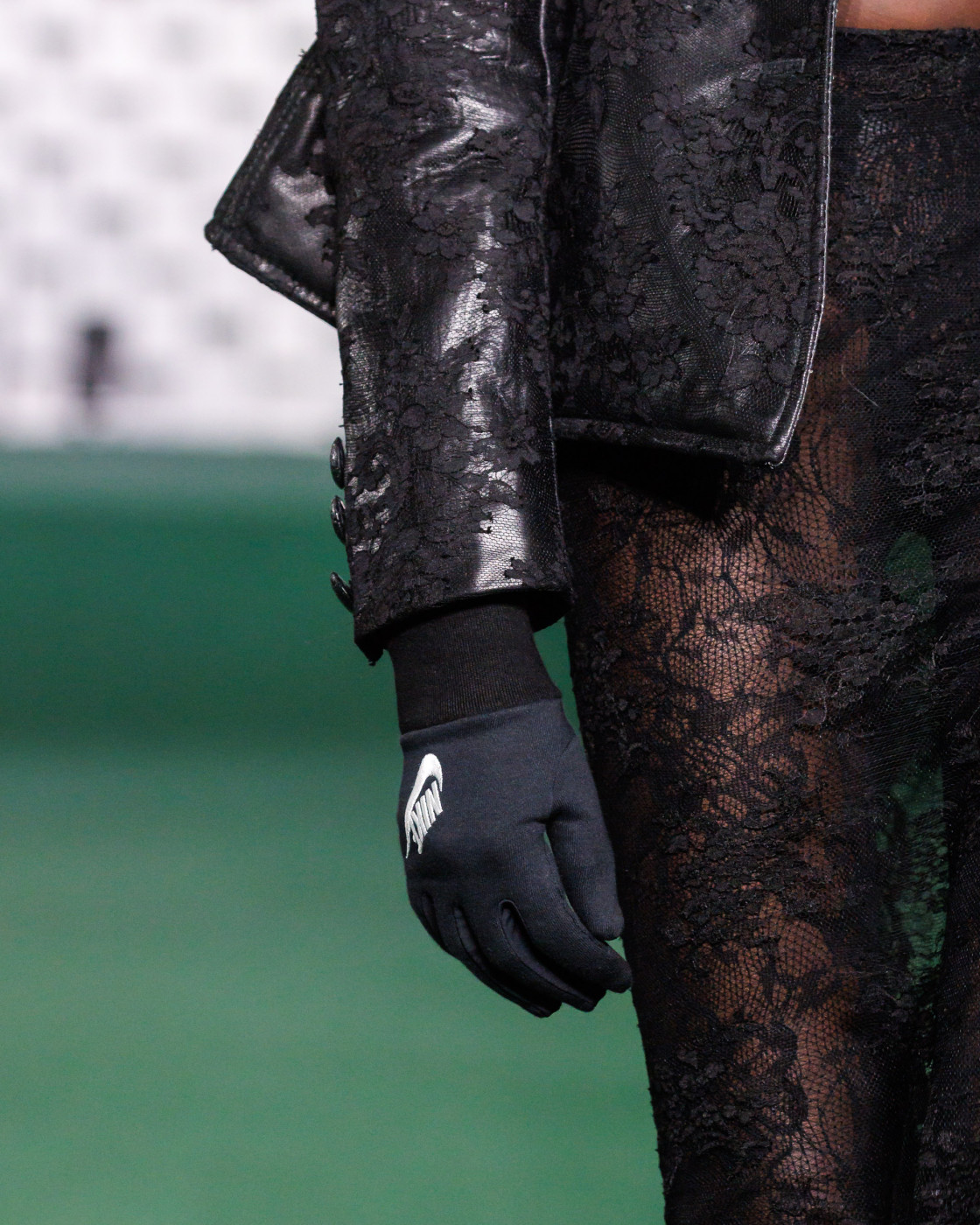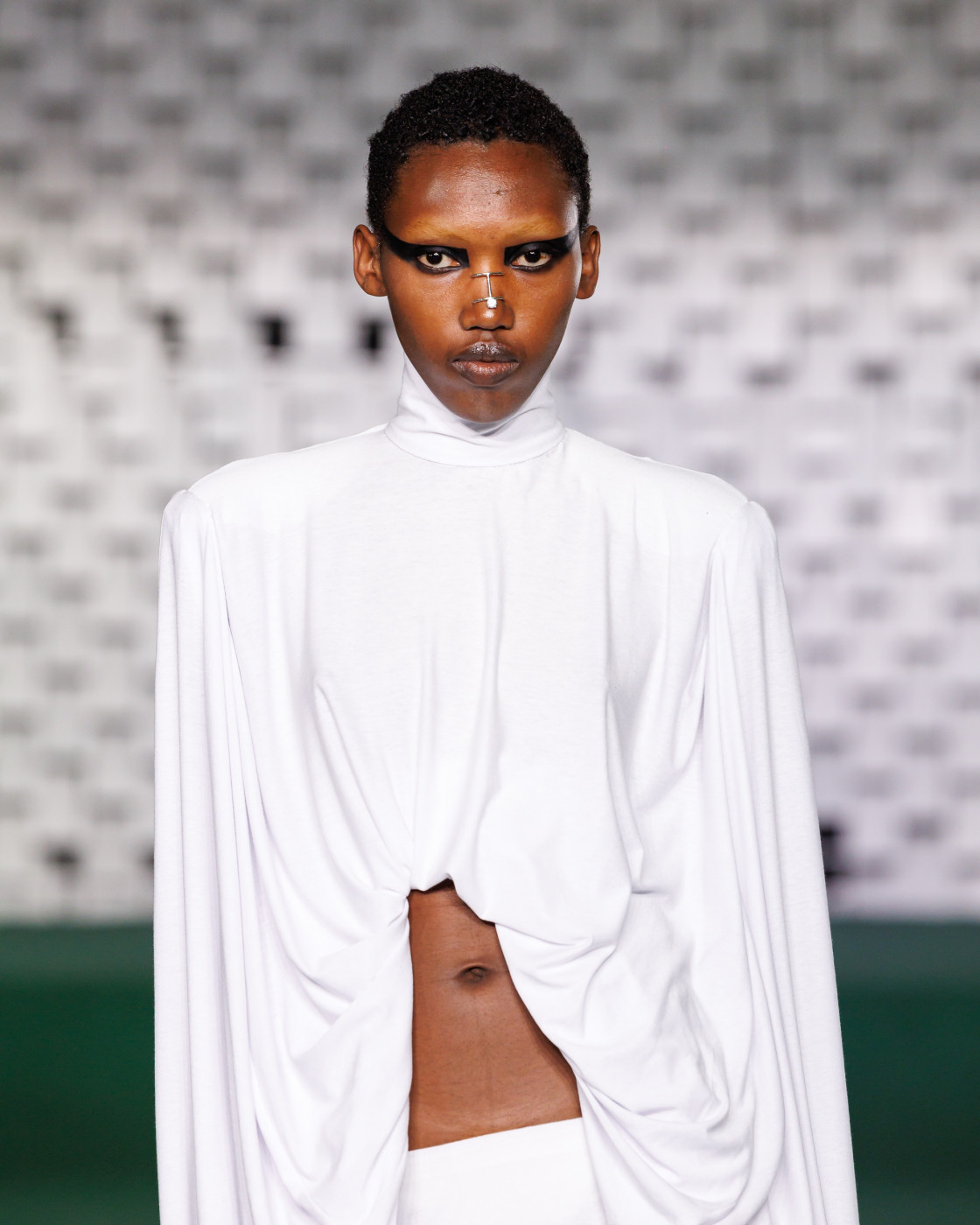
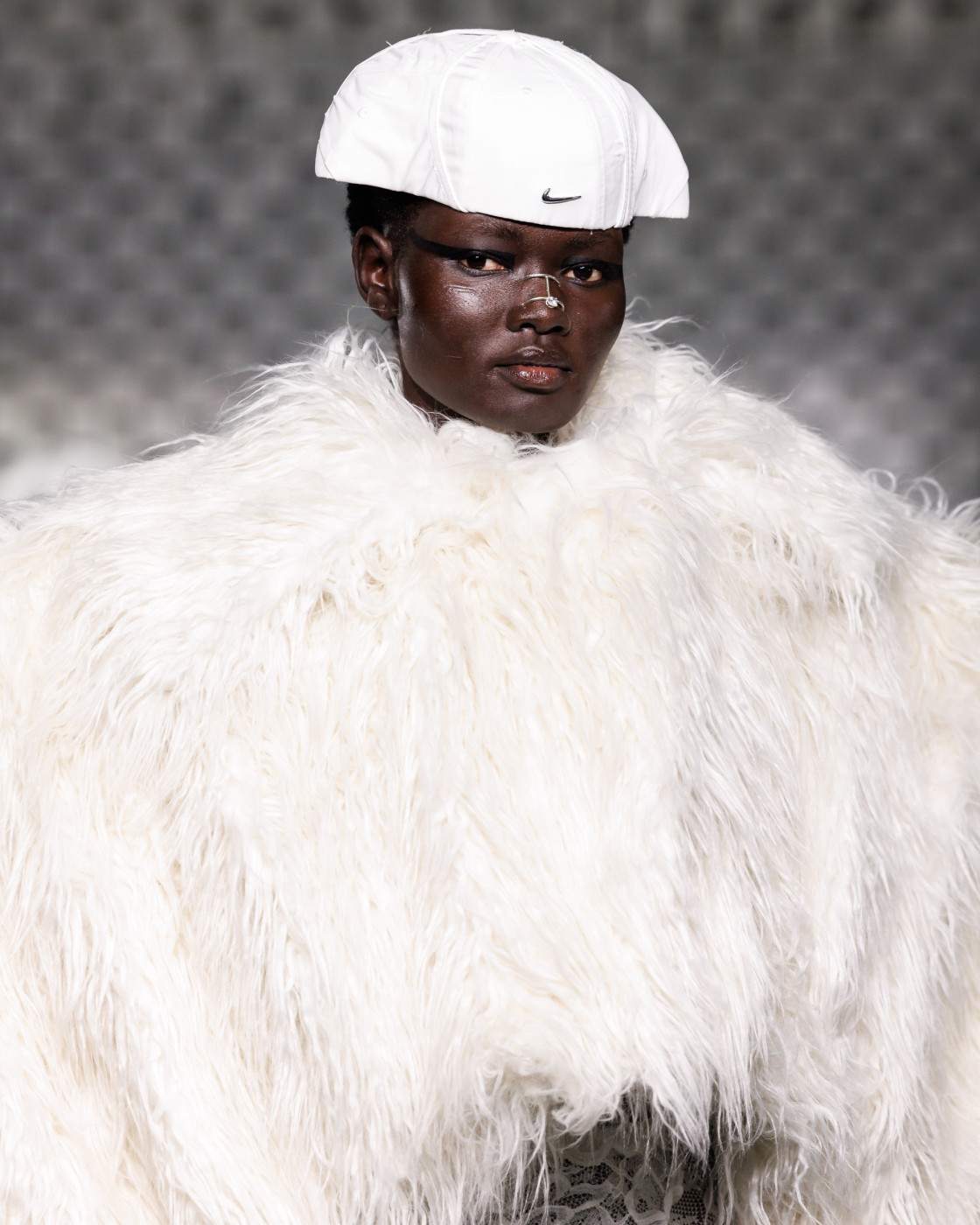
Biggest Surrealist Splash: Inside Luis de Javier’s Parisian debut
In the iconic modernist building Espace Niemeyer in northeastern Paris, designed by the well-known Brazilian architect Oscar Niemeyer, the ghost of communism made a memorable rendezvous with the angels and demons of Spain's enfant terrible. This building, which serves as the headquarters of the French Communist Party, seamlessly resonated with the mood and style of young Spanish designer Luis de Javier, who made his Paris debut after making waves at fashion weeks in London and New York. Paris, as he says, had always been his dream and point of attraction. Just like in the movie, starting out in Barcelona, the aspiring designer first tried to find an internship in the City of Love but eventually came here as a rising celebrity a few years later.
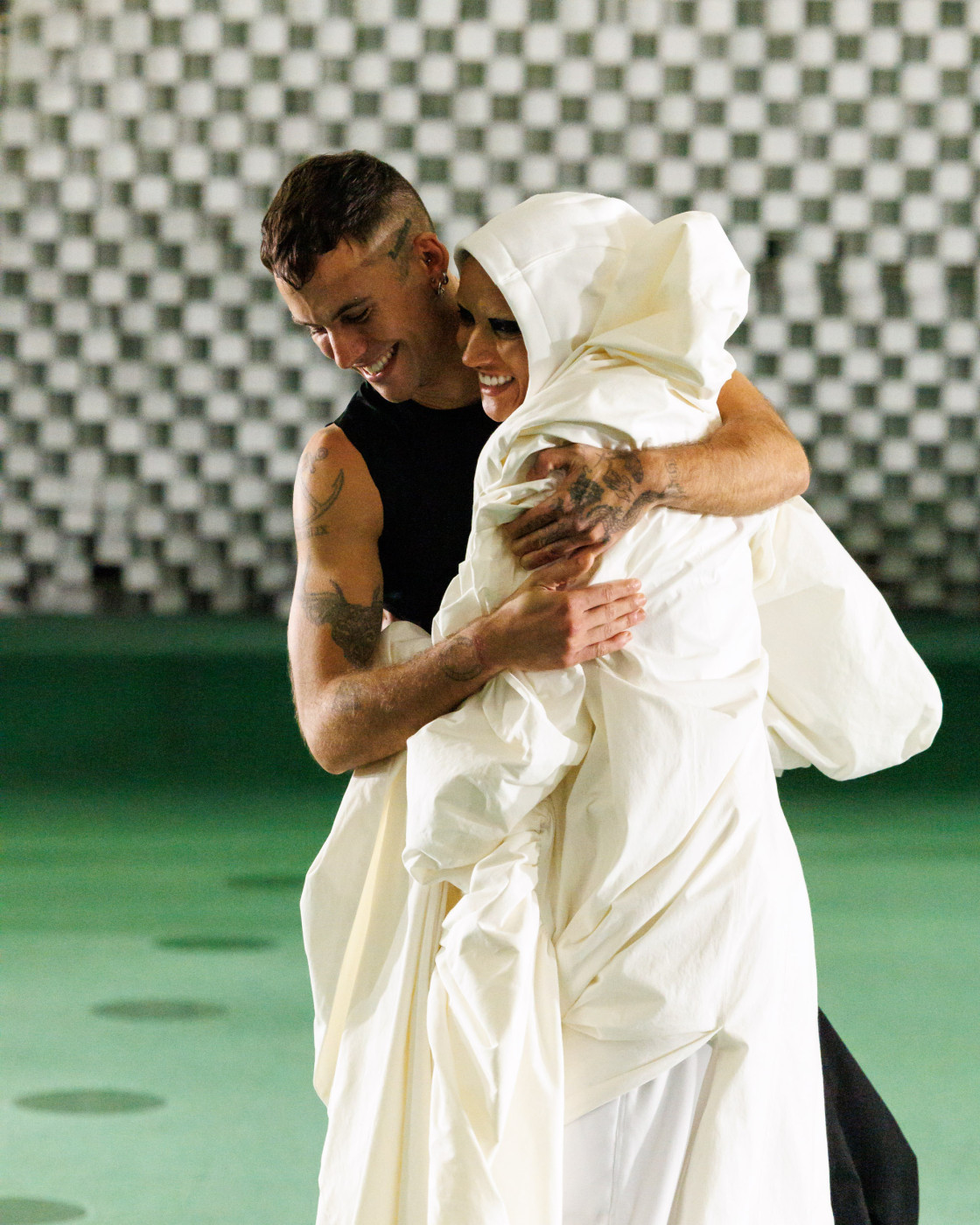
Once a fitting model for Vivienne Westwood and a graduate of London’s Central Saint Martins, Luis de Javier has, in just two years, captivated the fashion world. Now, he’s known as a close friend of designer Riccardo Tisci and photographer Steven Klein. Tisci, in fact, is his golden ticket, mentor, and guide into the world of fashion. Just as Tisci once benefited from his encounters with John Galliano and Lee McQueen, which dramatically shifted his career, the former Givenchy designer has now become the same kind of support for the creative and ambitious Spaniard. It was he who encouraged Luis to move to Paris. «I’ve learned so much from Riccardo,» he confesses in an interview with French Numéro. Many elements from Tisci’s era at Givenchy have found their way into Luis’s new collection, recently presented in Paris during fashion week. The most striking feature is the captivating mix of black-and-white gothic style with romanticism. Here, too, we see those very demons, with their dramatic, fluid, elongated silhouettes, followed by graceful angels adorned with lace, long feathers, and almost floating forms. Already a legendary couturier, Tisci, seated front row, is now an official mentor of de Javier: so this very first Parisian collection was approved by the master.
There is an undeniable theatricality present— one that was central to Tisci’s work — where the heritage of haute couture intertwines with darker, rebellious, and contemporary motifs, and glamour meets streetwear. In this context, it’s almost impossible not to sense the heritage of Cristóbal Balenciaga, his Spanish predecessor, who also ended up in Paris, and whose work embodied similar performative innovation and stylistic unity. Spanish fashion heritage, and local designers who have shaped its history, have indeed had a significant influence on his highly anticipated Spring-Summer 2025 collection. In a striking tribute to his Spanish roots, Luis de Javier has crafted a collection that is eye-catching, extravagant, and baroque. The standout pieces include headgear reminiscent of the traditional torero hats, an unofficial collaboration with Nike and the hatmaker from Valencia, Betto García. And just as like Balenciaga, Luis pays attention to the details: the couture embroideries were meticulously hand-stitched by local Spanish artisans and also his own students from his alma mater IED Barcelona. And of course, there is no Spain without a passion: therefore de Javier added boudoir elements to his wardrobe – think lace leggings, mantillas, semi-transparent mesh dresses, skirts revealing strings put high to the waist and thigh-high stockings. Also, impossible to miss: the Dali-inspired moustaches and surrealistic notes, a reference to the major surrealist exhibition currently on display at the Centre Pompidou. Luis Buñuel would surely appreciate this decadent twist. In other words, Luis de Javier’s designs embody the sensual, and seductive essence of Spanish culture.
The clothing showcased in Luis de Javier’s Paris show is not only highly cinematic but also inherently contrasting in nature. It is no coincidence that the designer’s work intersects with another artist— Oscar Niemeyer. The creator of the city of the sun (the capital of Brazil, Brasília) and various utopian projects offers a perfect backdrop for Luis’s collection. This association represents the ideal symbiosis: Niemeyer’s bold architectural forms flawlessly complemented the retro-futuristic message of the very building he constructed for French communists as if inspired by Tarkovsky’s «Solaris». Communism itself was a kind of utopia, after all, and similarly, Luis de Javier presents his own utopian vision, combining seemingly incompatible elements in his cosmic journey. His models looked slightly out of Parisian place, like aliens from a sci-fi movie.
The main part of the runway show took place in Niemeyer’s signature cube, the central feature of the entire structure—a claustrophobic space that allowed the designer to immediately and ambitiously make everyone a captive of his creative spaceship. In these clothes, Luis de Javier’s army of aliens will not only find themselves beautiful but also feel empowered and ready for a new adventure. And with that comes the belief in a brighter future.
Courtesy: Luis de Javier
Text: Editorial team


